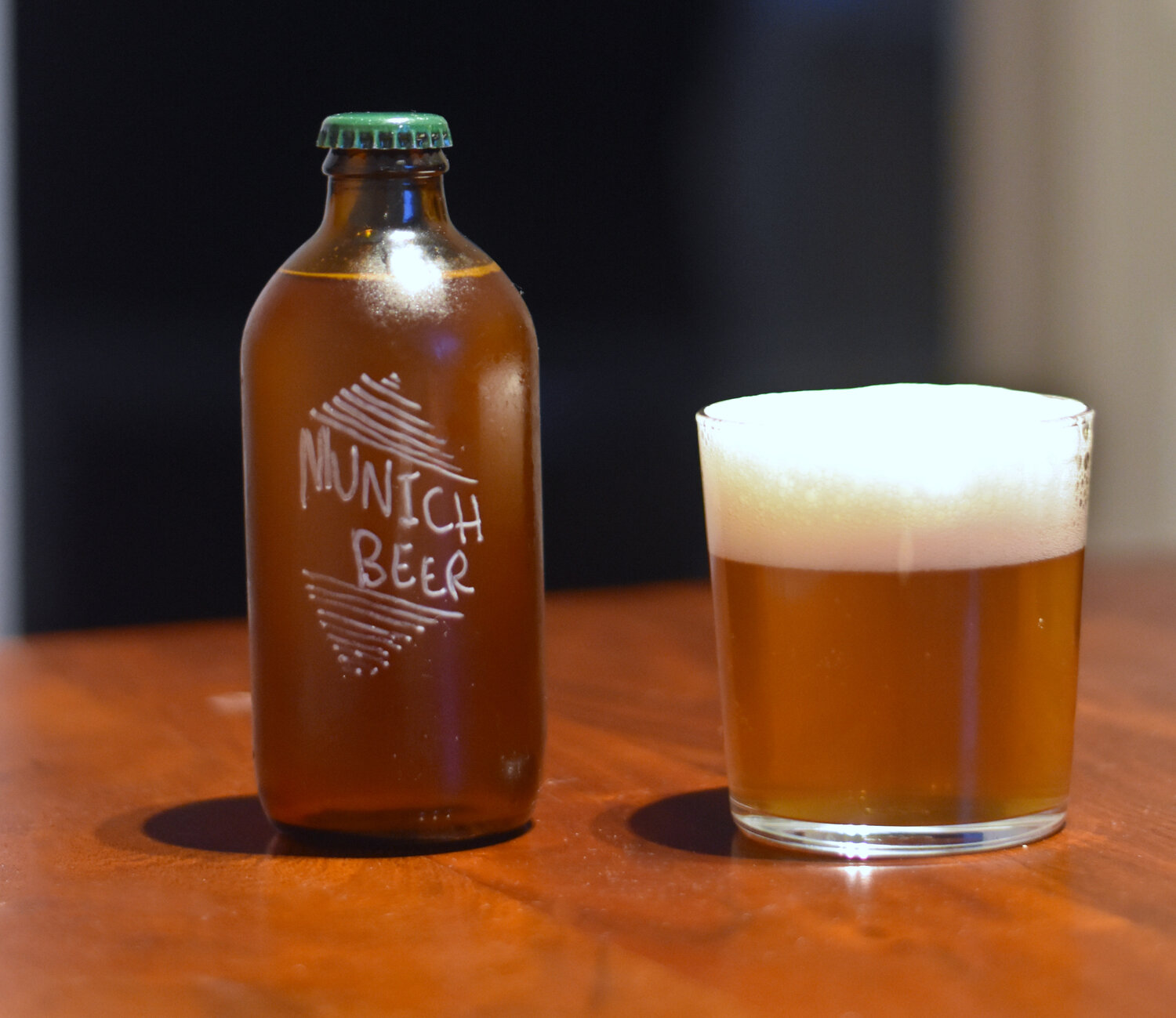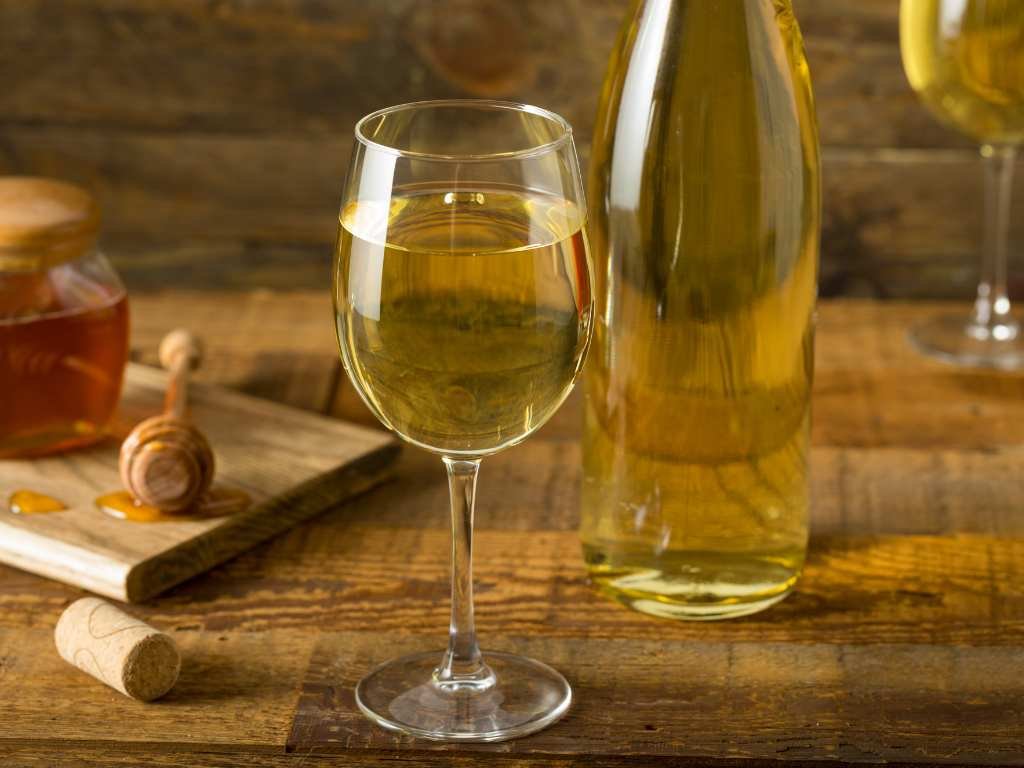Elderflower Mead Recipe
Hey, fellow homebrew enthusiasts! Are you ready to embark on a journey into the world of Elderflower Mead? I'm your friendly British bartender, and today we're diving into the magic of crafting this floral elixir right in the comfort of your own home. So, grab your brewing gear, and let's get started on this aromatic adventure!
What is Elderflower Mead?
Elderflower Mead is a magical concoction that combines the sweet embrace of honey, the purity of water, and the delicate fragrance of elderflowers. It's like capturing the essence of a blooming garden in a glass. The result? A drink that's as elegant as it is refreshing, with floral notes dancing on your palate.
Ingredients for Elderflower Mead
Honey Selection
Choosing the right honey is crucial. Dive into the honey aisle and explore different varieties – from the robustness of wildflower honey to the subtlety of acacia. Your taste buds will thank you for the extra effort.
I’m lucky in that I live near an apiary so I get my honey and elderflowers from the same woodlands.
Elderflowers
Now, let's talk elderflowers. Whether you're harvesting them from your garden or sourcing them from a local supplier, aim for fresh or dried blossoms. Their aromatic charm is the heart and soul of your mead.
Water
Your canvas is the water, so make sure it's top-notch. Opt for clean, filtered water to create a pristine base for your floral masterpiece.
Champagne Yeast
Meet the unsung hero – champagne yeast. It's the maestro behind the scenes, adding that delightful effervescence and finesse to your mead. It's time to let the bubbles rise!
Wild Fermentation Mead
Wild Yeast on Elderflowers
Here's where Mother Nature lends a hand. Elderflowers carry natural wild yeast, adding an extra layer of complexity to your brew. Embrace the wild side – it's the secret ingredient for a truly unique mead. I usually use champagne yeast for all my mead making. But I have found success using the natural yeast thats on elderflowers.
When foraging for elderflowers, you’ll notice the dusty yellow pollen on the leaves, this is where all the yeast is. The more of that dusty yellow stuff, the more natural yeast.
Essential Equipment for Elderflower Mead Making
Fermentation Vessel
This vessel is your mead cauldron, where the alchemical process begins. Choose one with an airlock to keep unwanted guests (we're talking bacteria) out of your brew.
The Kind I Use
Airlock
Think of the airlock as your gatekeeper, allowing carbon dioxide to escape during fermentation without letting any nasties in. It's a small investment for a clean and successful brew.
Siphon
The siphon is your liquid conductor, facilitating smooth transfers without disturbing the delicate flavors. It's like the conductor's wand in your floral symphony.
Bottles
These are the homes for your mead masterpiece. Whether you choose caps or corks, find the closure that suits your style and keeps the magic inside.
Sanitization Supplies
Cleanliness is next to godliness in brewing. Ensure your bottles and equipment are squeaky clean with sanitization solutions and brushes.
When is Elderflower Season in the UK?
Elderflower season in the UK typically graces us with its presence in late spring to early summer. This is the prime time to don your foraging hat and gather those fragrant blossoms for your mead-making adventure.
Foraging for Elderflowers
Foraging Ethics:
Before you embark on your foraging escapade, remember to forage ethically. Respect nature, choose sustainable practices, and ensure you're not disrupting the delicate balance of the ecosystem.
Also, little tip for you, the higher the elderflower the better. Dogs (and people) piss on trees so avoid the low ones as much as possible.
How to spot Elderflower in the wild
Leaves
Compound and pinnate (feather-shaped) with five or seven leaflets. Leaflets are arranged opposite to each other with one single leaflet at the tip. The edge of each leaflet is toothed and there may be small hairs on the underside.
Flowers
Flat-topped clusters of tiny, creamy-white flowers appear in June. To many people the fragrance is sweet and summery and it attracts masses of insects.
The easiest way to spot elderflower is just to give it a sniff. Elderflower has a very identifiable smell, and if you’re unfamiliar with that smell, go buy some elderflower cordial and smell that before going out to forage.
Crafting the Elderflower Mead
Elderflower Mead Recipe
Let's dive into crafting your floral elixir with a simple recipe. Mix honey, elderflowers, and water in your fermentation vessel. Introduce the champagne yeast, and let the magic happen during fermentation. Patience is key – guide your mead through the weeks of transformation.
Combining Honey and Elderflowers:
Achieving the perfect balance is an art. Let the honey and elderflowers dance together, creating a harmonious marriage of flavors. It's the sweet symphony your taste buds have been waiting for.
Fermentation Period
Patience is a virtue in brewing. Allow your mead to ferment over the next few weeks. This is where the magic truly happens as the yeast works its enchantment.
Racking Process
Once the fermentation party is over, it's time for the racking process. Gently transfer your mead to another vessel, leaving behind any sediment. This ensures clarity and a smoother taste.
Bottling and Aging Elderflower Mead
Sanitize for Success
Before bottling, make sure everything is squeaky clean. Sanitize your bottles and equipment to create a pristine environment for your mead.
Siphoning into Bottles
Use your trusty siphon to transfer the mead from the fermentation vessel to the bottles. This ensures a graceful transfer, leaving sediment behind.
Choosing the Right Seals
Caps or corks? The choice is yours. Select the closure that aligns with your style and seals the floral magic within.
Aging Gracefully
Like a fine wine, meads deserve time to mature. Embrace the art of patient aging – let your mead develop its full flavor potential over time.
Flavor Notes and Variations:
Elderflower Companions
Delve into potential flavor companions that elevate the elderflower experience. Consider adding complementary ingredients to customize your mead and create a truly personal brew.
Experimentation
Encourage the homebrew artist within you. Feel free to experiment with additional ingredients, be it herbs, fruits, or spices. Your mead, your rules!
How to check the ABV of your homebrew
You’ll need to use a hydrometer to check the Alcohol By Volume (ABV) of homemade mead, follow these steps:
Initial Gravity Reading (OG):
Take a sample of your mead before fermentation begins. This is your initial gravity reading. Here is the hydrometer you want if you’re US based, and here’s one if you’re UK based.
Fill a sanitized container with enough mead to submerge the hydrometer.
Place the hydrometer in the sample, and spin it gently to release any air bubbles that may cling to it.
Take the reading at the point where the surface of the liquid intersects with the hydrometer scale. This reading is your original gravity (OG).
Fermentation:
Allow your mead to ferment. As the yeast converts sugars into alcohol, the gravity will decrease.
Final Gravity Reading (FG):
When fermentation is complete, take another sample of your mead using a sanitized container.
Place the hydrometer in the sample, spin gently to remove bubbles, and take the reading at the point where the liquid intersects with the hydrometer scale. This reading is your final gravity (FG).
Calculate ABV:
Subtract the FG from the OG. The difference represents the amount of sugar that has been converted to alcohol.
Use an online calculator or formula to convert this difference into ABV. The formula is often something like: ABV=(OG−FG)×131.25 This formula assumes that the OG and FG are in specific gravity units. For example, if the original is 1090 and the end is 0990 then you would do 1090 - 0990 = 100. Then 100 x 131.25 = 13,125. Meaning the approx abv is 13.1%. But honestly, just take the numbers and bunch them into a few different online abv calculators and you’ll get an answer.
Adjustments:
Some hydrometers are designed for use with different liquids, so make sure you're using a hydrometer calibrated for use with alcoholic beverages. Adjustments may be necessary if your hydrometer is calibrated for a different liquid.
Temperature Correction:
Hydrometers are typically calibrated for a specific temperature, often 60°F (15.5°C). If your mead is at a different temperature, you may need to apply a temperature correction using a correction table or calculator.
Always remember to follow proper sanitation procedures when taking samples to avoid contamination. Additionally, be cautious when opening fermentation vessels to avoid introducing contaminants or disrupting the fermentation process.
Serving and Pairing Tips
Elderflower Taste
Wondering about the taste? Elderflowers offer a delicate floral profile with hints of honey and citrus. It's a sip of sunshine in every glass.
Serving Temperature
Unlock the optimal serving temperature for a delightful experience. Elderflower mead shines best when served just right.
Pairing Possibilities
Explore food pairings that dance with the floral notes of your elderflower mead. From light salads to fruity desserts, the possibilities are as endless as your creativity.
Sharing the Elegance
Gift Ideas:
Spread the floral joy! Consider gifting your elderflower mead to friends and family. It's a unique and thoughtful present that carries the essence of your homebrewing prowess.
Elderflower Mead Step by Step

Elderflower Mead
Ingredients
Instructions
- Mix everything together in a clean demijohn. It helps the honey dissolve if the water is warm at this point.
- Add the yeast and swirl. On your packet of yeast, it will give instructions on what temperature you should ferment in. I'm from a cold region, so I keep my demijohn wrapped in a blanket in the back of a dark cupboard.
- After 4 days, Use a siphon to transfer your elderflower mead into a second clean demijohn. Throw out the elderflower. You may have to do this a second time if you still have little bits of elderflower floating around your mead.
- Fermentation will continue for a further 7 days depending on how much honey and how cool/warm the demijohn is. After this, you can bottle and refrigerate your elderflower mead. If you have an airlock on your demijohn, you'll know when the fermentation is done because the airlock will stop bubbling.
Notes
Once you've done this once, play around with the types of honey and amounts of honey to create your own signature mead. Use a hydrometer if you want to test the abv. Instructions can be found above on how to use them.
Nutrition Facts
Calories
275.81Fat
0 gSat. Fat
0 gCarbs
74.75 gFiber
0.18 gNet carbs
74.57 gSugar
74.48 gProtein
0.27 gSodium
22.56 mgCholesterol
0 mgThe nutritional information shown is an estimate provided by an online nutrition calculator. It should not be considered a substitute for a professional nutritionist’s advice. See our full nutrition disclosure here.
Search Drinks
Cocktails, Non-alcoholic, Wine, Coffee, Drink guides, Techniques, Fermentation
All Recipes
Hi, I’m Cameron, guv’nor of Smartblend. If you liked this then you’re in luck, I have a bunch more recipes like it. I share only vegetarian and pescatarian food recipes, cocktails, and drink guides with a sprinkling of wellness and mindful drinking. If that sounds like you, then stick around!
Related Recipes
Smartblend is a participant in the Amazon Services LLC Associates Program, an affiliate advertising program designed to provide a means for sites to earn advertising fees by advertising and linking to amazon.co.uk and amazon.com. Smartblend does earn a small commission on goods purchased through the included links. Don't worry, it doesn't cost you any more, but we do appreciate your referral!






























